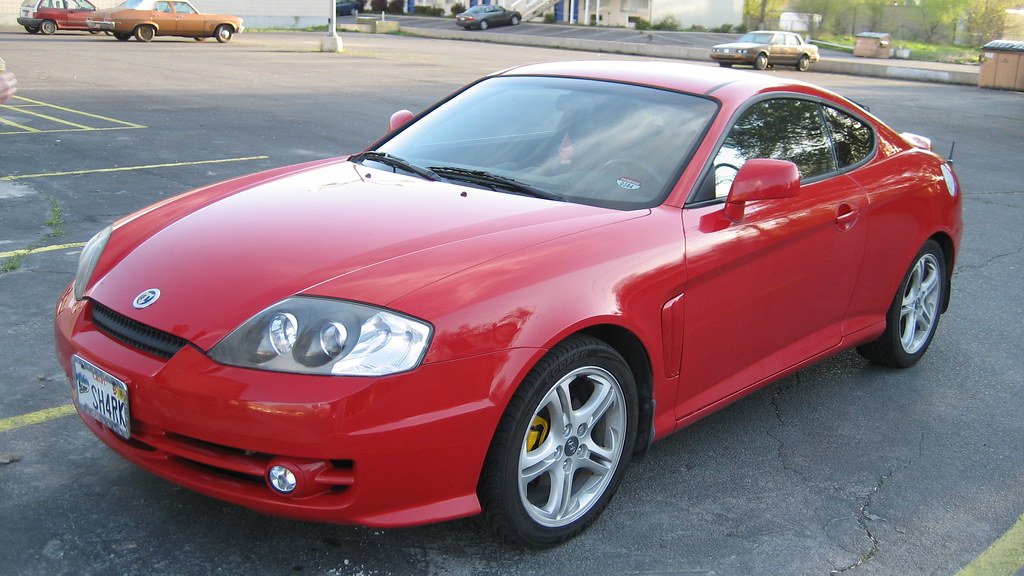
The 1960s, what a decade for automobiles! It was a truly golden age, a time when technology and design were not just evolving, but utterly exploding. For those of us who live and breathe cars, or simply yearn for a time when vehicles had more soul, more curves, and more genuine character than today’s often angular and aggressive machines, the ’60s stand as an unparalleled era. It was a period of revolutionary designs, engineering marvels, and an unbridled pursuit of speed and style that left an indelible mark on automotive history.
Imagine the sheer excitement of seeing these beasts hit the roads for the first time – from fabulous pony cars that captured youthful exuberance to beastly muscle cars roaring with raw power, and from sophisticated sports cars to timeless luxury icons. The 1960s brought forth impressive innovations, translating racetrack prowess directly to the highway. These weren’t just cars; they were statements, cultural phenomena, and indeed, some of the most exotic creations the automobile industry has ever conceived. Even those who aren’t deeply passionate about cars can easily recognize many of these legends, a testament to their enduring impact.
Driven by a deep nostalgia for the automobiles of times past, we’ve rounded up some of the most iconic classic cars from the 1960s. Each one, in its own glorious way, offered something unique, something special, something that set it apart in a fiercely competitive, yet incredibly fertile market. Get ready to embark on a high-octane journey as we celebrate the first half of our curated collection of 14 incredible machines that defined a generation and continue to thrill enthusiasts worldwide!
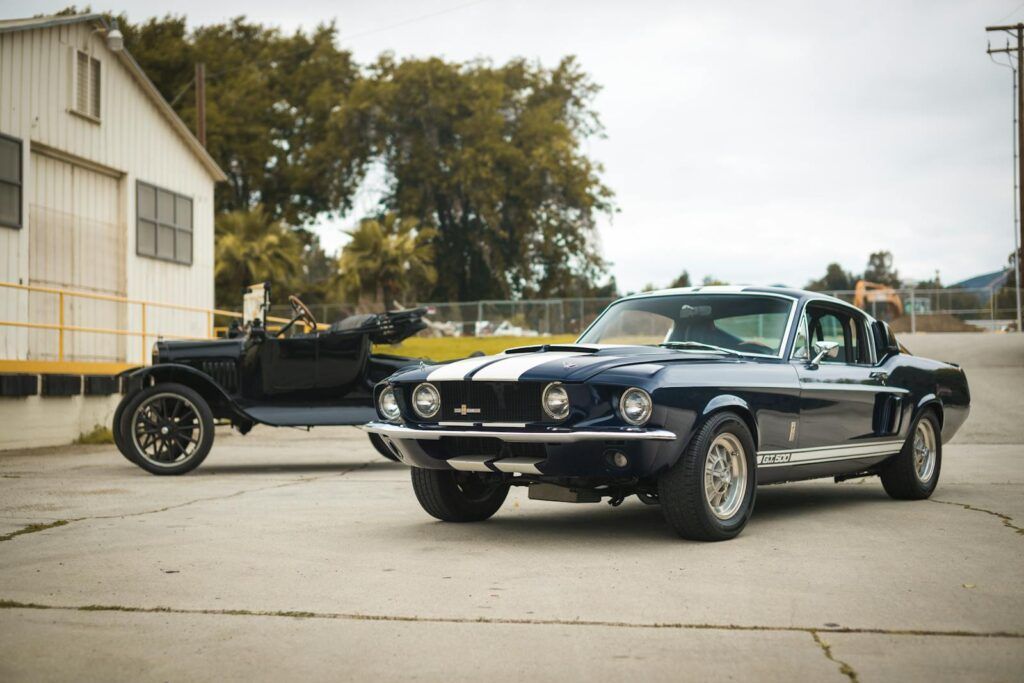
1. **Ford Mustang**The Ford Mustang. Just the name itself conjures images of unbridled freedom, raw power, and quintessential American cool. It is undoubtedly *the* American muscle car everybody thinks about when they hear the term, and for good reason. When it burst onto the scene in 1964, approximately five months before the normal production for 1965 began, with its 1964½ model, it wasn’t just a new car; it was a cultural phenomenon that took the world by storm with its allure and unmistakable raw power.
This pioneering pony car was an instant hit, igniting what would become known as the “pony car” craze, an entirely new segment in the automotive market. Its sporty looks, combined with an unprecedented array of customization options, made it incredibly appealing to a wide audience. Initially conceived with other potential names like Cougar, Thunderbird 2, and Torino, it was John Najjar, a fan of World War II fighter planes, who suggested “Mustang” after the P-51 Mustang. This name perfectly encapsulated its spirit and its mission.
While the first iterations might have had somewhat unremarkable engines, the subsequent variants quickly introduced the iconic V8 options that would propel the Mustang to the legendary status it holds today. The car received several redesigns throughout the 1960s and into the next decade, yet it always managed to retain that intimidating and instantly recognizable look of the original. The Mustang’s accessibility, performance, and versatile appeal ensured its place not just as a best-selling car of the 1960s, but as an enduring symbol of American automotive innovation and a beloved classic cherished by generations.
Car Model Information: 1966 Ford Mustang Base
Name: Ford Mustang
Caption: 2024 Ford Mustang GT Convertible
Aka: Ford T5 (Germany)
Manufacturer: Ford Motor Company
Production: March 1964 – present
ModelYears: 1965–present
Class: Unbulleted list
BodyStyle: Unbulleted list
Layout: Front-engine, rear-wheel-drive layout
Categories: 1970s cars, 1980s cars, 1990s cars, 2+2 coupés, 2000s cars
Summary: The Ford Mustang is an American automobile manufactured and marketed by Ford since 1964, as Ford’s longest nameplate in continuous production. Currently in its seventh generation, it is the fifth-best selling Ford car nameplate. The namesake of the “pony car” automobile segment, the Mustang was developed as a highly styled line of sporty coupes and convertibles derived from existing model lines, initially distinguished by its pronounced “long hood, short deck” proportions.
Originally predicted to sell 100,000 vehicles yearly, the 1965 Mustang became the most successful vehicle launch since the 1927 Model A. Introduced on April 17, 1964 (16 days after the Plymouth Barracuda), over 400,000 units were sold in its first year; the one-millionth Mustang was sold within two years of its launch. In August 2018, Ford produced the 10-millionth Mustang; matching the first 1965 Mustang, the vehicle was a 2019 Wimbledon White convertible with a V8 engine.
The success of the Mustang launch led to multiple competitors from other American manufacturers, including the Chevrolet Camaro and Pontiac Firebird (1967), AMC Javelin (1968), and Dodge Challenger (1970). It also competed with the Plymouth Barracuda, which was launched around the same time. The Mustang also had an effect on designs of coupes worldwide, leading to the marketing of the Toyota Celica and Ford Capri in the United States (the latter, by Lincoln-Mercury). The Mercury Cougar was launched in 1967 as a unique-bodied higher-trim alternative to the Mustang; during the 1970s, it included more features and was marketed as a personal luxury car.
From 1965 until 2004, the Mustang shared chassis commonality with other Ford model lines, staying rear-wheel-drive throughout its production. From 1965 to 1973, the Mustang was derived from the 1960 Ford Falcon compact. From 1974 until 1978, the Mustang (denoted Mustang II) was a longer-wheelbase version of the Ford Pinto. From 1979 until 2004, the Mustang shared its Fox platform chassis with 14 other Ford vehicles (becoming the final one to use the Fox architecture). Since 2005, Ford has produced two generations of the Mustang, each using a distinct platform unique to the model line.
Through its production, multiple nameplates have been associated with the Ford Mustang series, including GT, Mach 1, Boss 302/429, Cobra (separate from Shelby Cobra), and Bullitt, along with “5.0” fender badging (denoting 4.9 L OHV or 5.0 L DOHC V8 engines).
Get more information about: Ford Mustang
Buying a high-performing used car >>>
Brand: Ford Model: Mustang
Price: $32,991 Mileage: 98,811 mi.
Read more about: The Drive for Value: 10 Collectible Classic Cars That Won’t Break the Bank or Your Toolkit
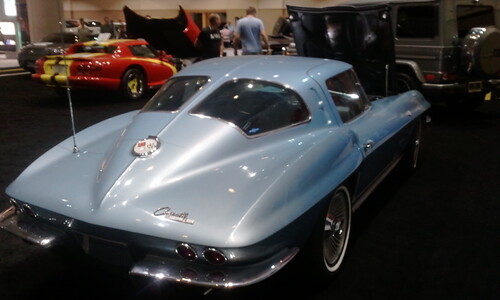
2. **Chevrolet Corvette Sting Ray**Ah, the ‘Vette! Simply known as a ‘Vette in much of North America, the Chevrolet Corvette is one of the original sporty, luxurious passenger cars in American history. But it was in the 1960s that it truly hit its stride with the introduction of its second generation, the C2 Sting Ray, in 1963. This was a defining moment for the American car scene, and frankly, automotive design worldwide.
The 1963 Chevrolet Corvette Sting Ray, especially with its iconic split-window coupe design, is arguably among the most recognizable Corvettes ever made. Its fiberglass body, a forward-thinking choice for the era, coupled with an independent rear suspension, signaled a tech-savvy future for the American sports car. This wasn’t just a pretty face; it was a vehicle pushing boundaries in engineering and dynamics, offering a driving experience that could rival the best European cars of its time.
Powered by a roaring American V8, the Sting Ray delivered exhilarating performance that captured the imagination of driving enthusiasts. Its combination of cutting-edge design and potent power made it a standout, setting new benchmarks for style and capability. The Sting Ray’s enduring appeal as a classic is celebrated by collectors who admire its innovation, audacious styling, and its pivotal role as a symbol of 1960s American automotive creativity.
Car Model Information: 2022 Honda Civic Sport
Name: Chevrolet Corvette (C2)
Caption: 1963 Chevrolet Corvette Sport Coupe
Manufacturer: Chevrolet
Aka: Chevrolet Corvette Sting Ray
Production: August 1962–July 1967
ModelYears: 1963–1967
Platform: Series 0800 (1962-1964),Series 194 (1965-1967)
Chassis: Body-on-frame
Assembly: St. Louis, Missouri
Predecessor: Chevrolet Corvette (C1)
Successor: Chevrolet Corvette (C3)
Class: Sports car
BodyStyle: Convertible (car),coupé
Layout: Front-engine, rear-wheel-drive layout
Engine: {{cvt,327,cuin,L,1,Chevrolet small-block engine#327,V8 engine
Wheelbase: cvt
Length: cvt
Width: cvt
Height: cvt
Weight: cvt
Transmission: manual transmission,manual transmission,Powerglide
Related: Bill Thomas Cheetah
Designer: Larry Shinoda
Categories: 1960s cars, All articles needing additional references, All articles with specifically marked weasel-worded phrases, All articles with unsourced statements, Articles needing additional references from July 2024
Summary: The Chevrolet Corvette (C2) is the second-generation Corvette sports car, produced by the Chevrolet division of General Motors (GM) for the 1963 through 1967 model years.
Get more information about: Chevrolet Corvette (C2)
Buying a high-performing used car >>>
Brand: Chevrolet Model: Corvette Sting Ray
Price: $25,849 Mileage: 16,061 mi.
Read more about: Boomers, Get Ready to Rev! These 12 Iconic ’60s Car Models Still Drive Our Dreams
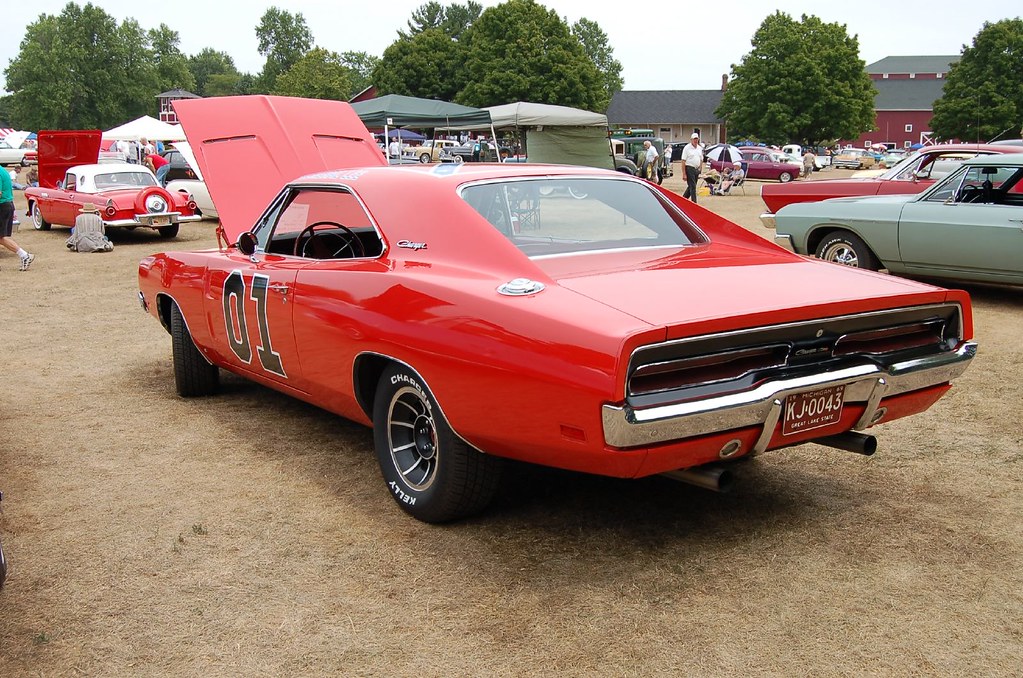
3. **Dodge Charger**When we talk about legendary American muscle cars, the Dodge Charger is a name that immediately springs to mind, and it’s a truly iconic one. While other brands were already expanding into the market with upsized pony cars, Dodge was initially a bit behind. But then, in 1966, they exploded onto the scene with the Dodge Charger, making an undeniable statement in the burgeoning muscle car landscape.
The first two generations of the Charger delivered two distinct and memorable redesigns for fans to enjoy in the 1960s. The first generation ran from 1966 to 1967, followed by the second generation from 1968 to 1970. It’s this second generation, in particular, that is often celebrated for its superb design lines, especially that unbroken front grille which cleverly hid the headlights when not in use, giving it a menacing and sophisticated look.
Throughout these models, Dodge offered several formidable engines, including their 5.2L V8 and the legendary Hemi V8, ensuring that the Charger had the power to match its aggressive aesthetics. Even though it might not have been one of the absolute best-selling cars in the 1960s, its sheer iconic status is undeniable. For many, nothing quite matches the classic version’s bold spirit, raw presence, and its vital contribution to the muscle car world.
Car Model Information: 2023 Dodge Charger SRT Hellcat Widebody Jailbreak
Name: Dodge Charger
Caption: 1969 Dodge Charger
Manufacturer: Dodge
Production: 1966–1978,1981–1987,2005–present
ModelYears: 1966–1978,1982–1987,2006–present
Categories: 1960s cars, 1970s cars, 1980s cars, 2000s cars, 2010s cars
Summary: The Dodge Charger is a model of automobile marketed by Dodge in various forms over eight generations since 1966.
The first Charger was a show car in 1964. A 1965 Charger II concept car resembled the 1966 production version.
In the United States, the Charger nameplate has been used on mid-size cars, personal luxury coupes, subcompact hatchbacks, and full-size sedans.
Get more information about: Dodge Charger
Buying a high-performing used car >>>
Brand: Dodge Model: Charger
Price: $94,975 Mileage: 4,260 mi.
Read more about: Unearthing Automotive Gold: 10 Jaw-Dropping ’70s Muscle Cars You Can Still Own for a Steal
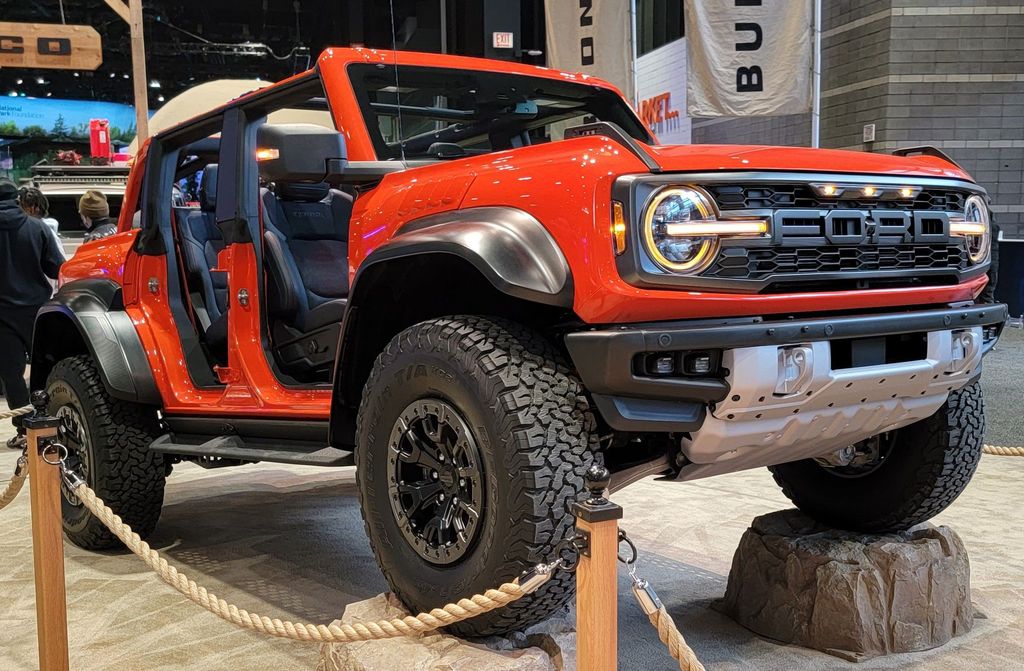
4. **Ford Bronco**Before the era of beastly trucks and SUVs, there was the Ford Bronco, a rugged icon that laid the groundwork for adventure. In a competitive landscape where rivals like the International Scout were emerging, Ford emphatically answered with their own powerhouse: the Ford Bronco. It’s such an iconic vehicle that its production, which stopped in 1996, was gloriously revived in 2021, proving its timeless appeal.
The 1960s Ford Bronco was an incredibly versatile machine, available in three distinct styles: the practical two-door wagon, the open-body roadster for those craving an open-air experience, and the utilitarian half-cab pickup. This range of options made it suitable for a multitude of purposes, from off-road adventures to daily utility, captivating a diverse customer base. Its original offering with only a three-speed manual transmission helped keep costs lower, making it an accessible choice for many.
Under the hood, the first models were equipped with Ford’s 170 cubic-inch inline-six engine, providing reliable power for its various applications. Then, in 1966, Ford significantly upped the ante by introducing the option of a more potent 200 horsepower V8 engine, boosting its capability and appeal to those seeking more grunt. The Bronco, with its robust build and pioneering design, cemented its place as a quintessential American off-road legend, embodying the spirit of rugged individualism and exploration of the era.
Car Model Information: 2025 Ford Bronco Big Bend
Name: Ford Bronco
Caption: 2021 Ford Bronco Outer Banks (4-door)
Manufacturer: Ford Motor Company
Production: 1965–1996,2021–present
Class: Compact SUV
Layout: Front-engine, four-wheel-drive
BodyStyle: SUV
Successor: Ford Expedition
ModelYears: 1966–1996,2021–present
Categories: 1970s cars, 1980s cars, 1990s cars, 2020s cars, All-wheel-drive vehicles
Summary: The Ford Bronco is a model line of SUVs manufactured and marketed by Ford. The first SUV model developed by the company, five generations of the Bronco were sold from the 1966 to 1996 model years. A sixth generation of the model line was introduced for the 2021 model year. The nameplate has been used on other Ford SUVs, namely the 1984–1990 Bronco II compact SUV, the 2021 Bronco Sport compact crossover, and the China-only 2025 Bronco New Energy.
Originally developed as a compact off-road vehicle using its own chassis, the Bronco initially competed against the Jeep CJ-5 and International Scout. For 1978, Ford enlarged the Bronco, making it a short-wheelbase version of the F-Series pickup truck; the full-size Bronco now competed against the Chevrolet K5 Blazer and Dodge Ramcharger.
Following a decline in demand for large two-door SUVs, Ford discontinued the Bronco after the 1996 model year, replacing it with the four-door Ford Expedition; followed by the larger Ford Excursion. After a 25-year hiatus, the sixth-generation Bronco was reintroduced in 2021 as a mid-size two-door SUV. It is also offered as a full-size four-door SUV with a 16 in (41 cm) longer wheelbase. It competes directly with the Jeep Wrangler as both a two-door and a four-door (hardtop) convertible.
From 1965 to 1996, the Ford Bronco was manufactured by Ford at its Michigan Truck Plant in Wayne, Michigan, where it also manufactures the sixth-generation version.
Get more information about: Ford Bronco
Buying a high-performing used car >>>
Brand: Ford Model: Bronco
Price: $46,449 Mileage: 3,111 mi.
Read more about: Unlocking Long-Term Value: The Top 10 SUVs That Hold Their Worth After Five Years, According to Expert Analysis
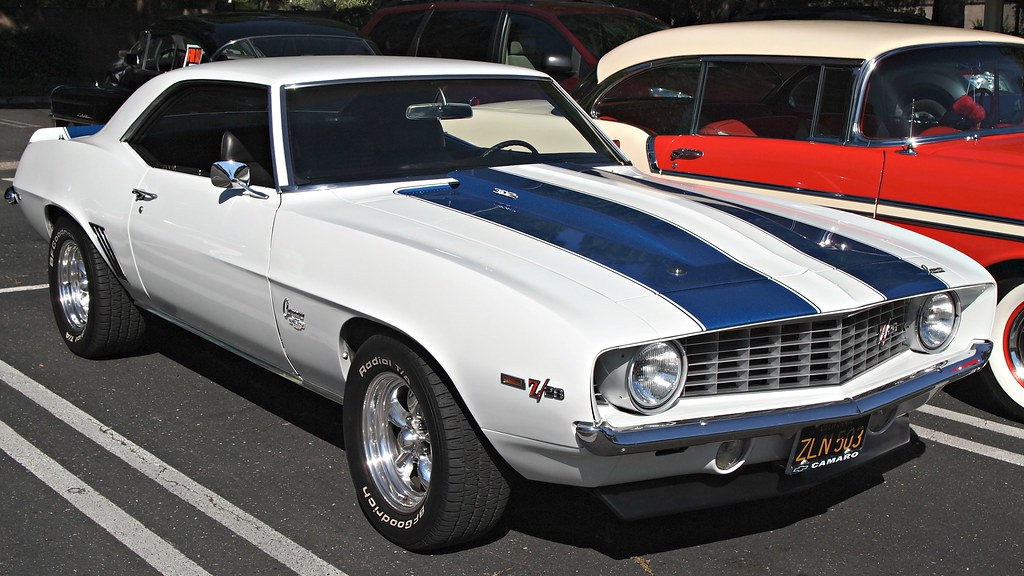
5. **Chevrolet Camaro**The Ford Mustang’s explosive popularity upon its 1964½ release undoubtedly set the stage for a fierce rivalry, and a few years later, Chevrolet delivered their powerful answer: the Camaro. Launched in 1967, the Chevrolet Camaro immediately entered the pony car fray, and it absolutely held its own, carving out its own legendary niche in automotive history. To this day, Chevy is still proudly producing the Camaro, a testament to its enduring design and performance legacy.
The first styles available for the Camaro were the classic two-door coupe and a convertible model, offering choices for different tastes and driving desires. While the standard engine option was a robust 3.8L inline-six, Chevrolet, understanding the burgeoning demand for power, made several other V8 options available for those who wanted that “extra jam.” This flexibility in powertrain options allowed the Camaro to cater to a broad spectrum of enthusiasts, from casual drivers to dedicated performance seekers.
Another clever and practical feature of the early Camaros was their ability to borrow parts from the Chevy Nova. This made maintenance and repairs conveniently straightforward for owners of both vehicles. The Camaro was a stunning rear-wheel-drive beast, weighing around 3,000 pounds, built on a GM F-body platform, and powered by V8s, the most capable of which was a 6.5-liter. It was truly everything it needed to be to stand shoulder-to-shoulder with its iconic rival.
Car Model Information: 1968 Chevrolet Camaro
Name: Chevrolet Camaro
Manufacturer: Chevrolet
Production: 1966–2002,2009–2023
ModelYears: 1967–2002,2010–2024
Class: Pony car
BodyStyle: coupe,convertible
Platform: GM F platform,GM Zeta platform,GM Alpha platform
Layout: Front-engine, rear-wheel-drive layout
Categories: 1970s cars, 1980s cars, 1990s cars, 2+2 coupés, 2000s cars
Summary: The Chevrolet Camaro is a mid-size American automobile manufactured by Chevrolet, classified as a pony car. It first went on sale on September 29, 1966, for the 1967 model year and was designed to compete with the Ford Mustang. The Camaro shared its platform and major components with the Firebird, produced by General Motors’ Pontiac division that was also introduced for the 1967 model year.
Four distinct generations of the Camaro were developed before production ended in 2002. The nameplate was revived on a concept car that evolved into the fifth-generation Camaro; production started on March 16, 2009.
Production of the sixth generation of the Camaro ended in December 2023, for the 2024 model year.
Get more information about: Chevrolet Camaro
Buying a high-performing used car >>>
Brand: Chevrolet Model: Camaro
Price: $79,980 Mileage: 1,713 mi.
Read more about: Unearthing Automotive Gold: 10 Jaw-Dropping ’70s Muscle Cars You Can Still Own for a Steal
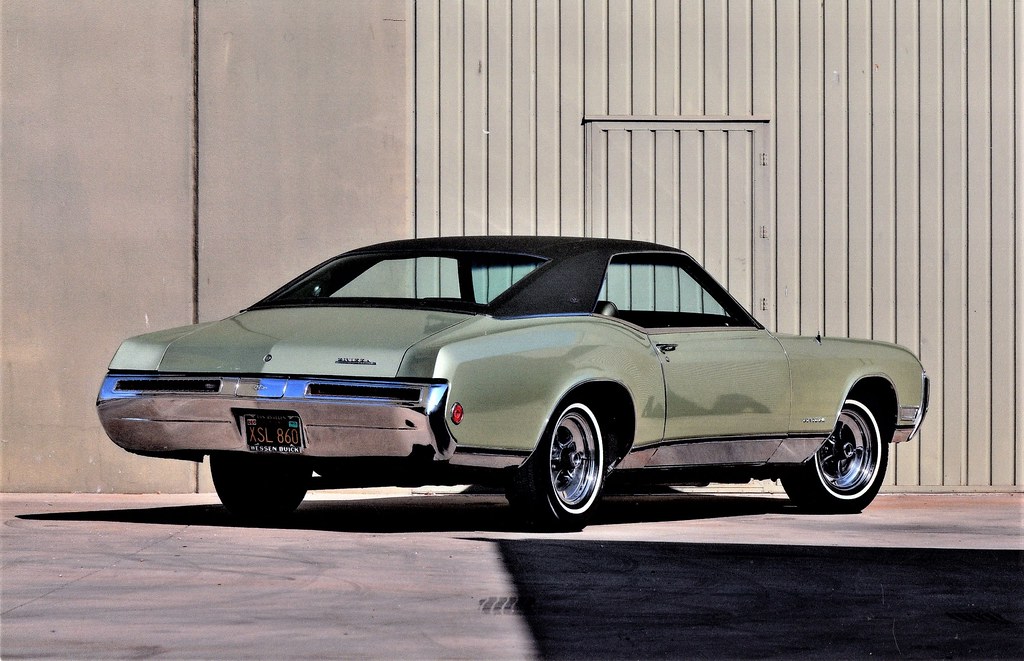
6. **Buick Riviera**Stepping into the realm of personal luxury, General Motors made an unforgettable splash with the Buick Riviera in 1963. This wasn’t just another car; it was GM’s inaugural, audacious dive into the high-end luxury car segment, and they certainly made waves. What truly set the Riviera apart was its fairly substantial departure from what GM typically produced, showcasing a fresh, bold vision for automotive elegance and performance.
The Riviera was an exquisite hardtop, two-door coupe, a style it maintained throughout its impressive production run, which extended into the 2010s. While its body styling and design underwent significant changes over the decades, GM consistently maintained that classic, sophisticated luxury look that defined the Riviera from day one. It was a vehicle that exuded class and power in equal measure, making it a highly desirable machine for those seeking refinement without sacrificing performance.
One key factor that propelled the Riviera to become one of the best-selling cars of the 1960s was GM’s strategic decision to limit its production. In its first year, only 40,000 of Buick’s total 440,000 cars produced were Rivieras. This deliberate scarcity significantly increased the demand for this luxury car, creating an aura of exclusivity and making it even more coveted. With its sharp ‘coke-bottle’ lines and a robust V8 engine, the 1963 Buick Riviera masterfully combined personal-luxury elegance with undeniable muscle-car strength, cementing its place as an enduring classic.
Car Model Information: 1971 Buick Riviera
Caption: 1963 Buick Riviera
Name: Buick Riviera
Predecessor: Buick Super
Manufacturer: Buick
ModelYears: 1963–1993,1995–1999
Class: Personal luxury car
Categories: 1960s cars, 1970s cars, 1980s cars, 1990s cars, All articles with specifically marked weasel-worded phrases
Summary: The Buick Riviera is a personal luxury car that was marketed by Buick from 1963 to 1999, with the exception of the 1994 model year.
As General Motors’ first entry into the personal luxury car market segment, the Riviera was highly praised by automotive journalists upon its high-profile debut. It was a ground-up design on a new GM E platform debuting for the 1963 model year and was also Buick’s first unique Riviera model.
Unlike its subsequent GM E platform stablemates, the Oldsmobile Toronado and Cadillac Eldorado, the Riviera was initially a front engine/rear-wheel drive platform, switching to front-wheel drive starting with the 1979 model year.
While the early models stayed close to their original form, eight subsequent generations varied substantially in size and styling. A total of 1,127,261 Rivieras were produced.
The Riviera name was resurrected for two concept cars that were displayed at auto shows in 2007 and in 2013.
Get more information about: Buick Riviera
Buying a high-performing used car >>>
Brand: Buick Model: Riviera
Price: $22,499 Mileage: 91,150 mi.
Read more about: Unearthing Automotive Gold: 10 Jaw-Dropping ’70s Muscle Cars You Can Still Own for a Steal
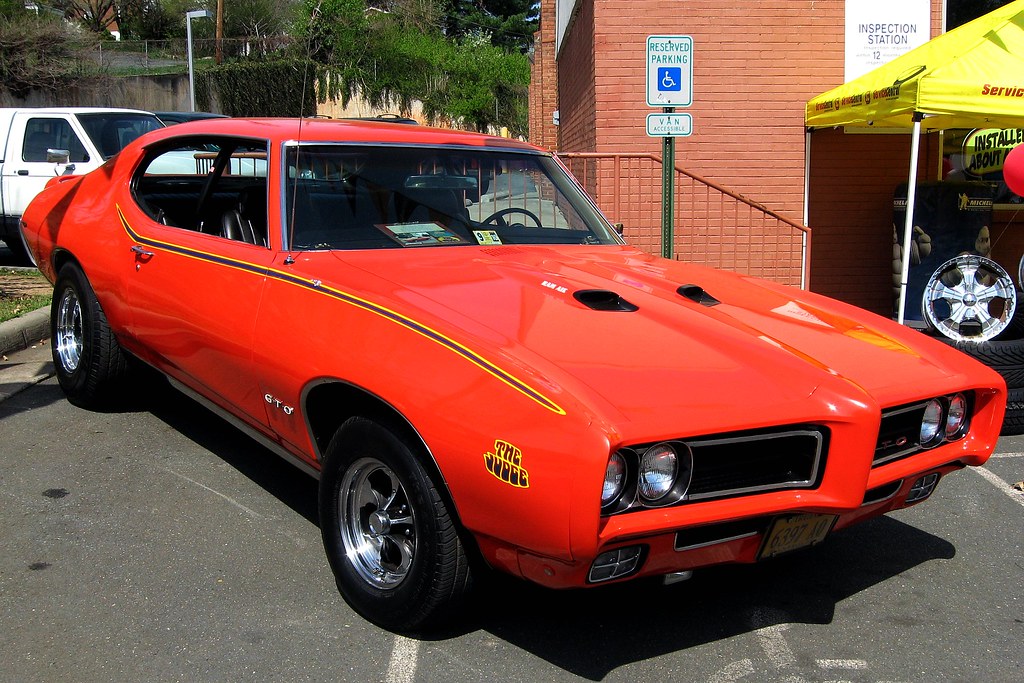
7. **Pontiac GTO**If any car can be credited with truly igniting the muscle car era and setting the automotive world ablaze with a horsepower race, it’s the Pontiac GTO. What a legend! Originally introduced in 1964, the GTO wasn’t even a standalone model at first; it was an incredibly popular package option for the Pontiac Lemans. This package wasn’t for the faint of heart, including significant upgrades to the engine, transmission, and suspension, transforming a standard car into a bona fide performance machine.
Its popularity was so immense that the following year, when the Pontiac Tempest line came out, the GTO was again offered as an option. The demand for this beast was undeniable, leading to a monumental step in 1966 when the Pontiac GTO finally earned its well-deserved status as its own distinct model. This moment truly marked the beginning of a fierce, exhilarating competition among American car manufacturers to produce ever more powerful and stylish muscle cars.
The GTO was available in three distinct styles: a classic hardtop, a sporty coupe, and an enticing convertible, with the hardtop proving to be the most popular by a long shot. When the second generation of GTO was released in 1968, the car underwent a significant transformation; the hard, sharp lines of the first-generation body style gave way to much softer and rounder contours, giving it a whole new, yet equally captivating, look. Even with fierce competition, the GTO’s exceptional design and performance were recognized, leading it to win the prestigious Car of the Year award in 1968. It wasn’t just a car; it was a revolution on wheels.
The sheer exhilaration and engineering genius of the 1960s automotive world weren’t confined to just a handful of American titans. Far from it! As the decade roared on, innovation knew no borders, and car manufacturers across the globe unleashed their own masterpieces, pushing boundaries and captivating enthusiasts with a potent blend of performance, style, and audacious design. It was a true golden age, a symphony of speed and sophistication from every corner of the world. Now, let’s buckle up and dive into seven more iconic machines that shaped this unforgettable era, showcasing global prowess and unforgettable engineering, from European legends to American performance titans that redefined what a car could be!
Car Model Information: 1966 Pontiac GTO Coupe
Name: Pontiac GTO
Caption: 2005 Pontiac GTO
Manufacturer: Pontiac (automobile),Holden
Class: Mid-size car,Compact car,Mid-size car
Production: 1963–1974,2003–2006
Predecessor: Pontiac Tempest
Layout: Front-engine, rear-wheel-drive layout
ModelYears: 1964-1974 2004-2006
Categories: 1970s cars, 2000s cars, All articles with unsourced statements, Articles with short description, Articles with unsourced statements from October 2008
Summary: The Pontiac GTO is a front-engine, rear-drive, two-door, and four-passenger automobile manufactured and marketed by the Pontiac division of General Motors over four generations from 1963 until 1974 in the United States — with a fifth generation made by GM’s Australian subsidiary, Holden, for the 2004 through 2006 model years.
The first generation of the GTO is credited with popularizing the muscle car market segment in the 1960s. Some consider the Pontiac GTO to have started the trend with all four domestic automakers offering a variety of competing models.
For the 1964 and 1965 model years, the GTO was an optional package on the intermediate-sized Pontiac LeMans. The 1964 GTO vehicle identification number (VIN) started with 22, while the 1965 GTO VIN began with 237. The GTO was designated as a separate Pontiac model from 1966 through 1971 (VIN 242…). It became an optional package again for the 1972 and 1973 intermediate LeMans. For 1974, the GTO was an optional trim package on the compact-sized Ventura.
The GTO model was revived for the 2004 through 2006 model years as a captive import for Pontiac, a left-hand drive version of the Holden Monaro, itself a coupé variant of the Holden Commodore.
Get more information about: Pontiac GTO
Buying a high-performing used car >>>
Brand: Pontiac Model: GTO
Price: $59,991 Mileage: 4,408 mi.
Read more about: Unearthing Automotive Gold: 10 Jaw-Dropping ’70s Muscle Cars You Can Still Own for a Steal
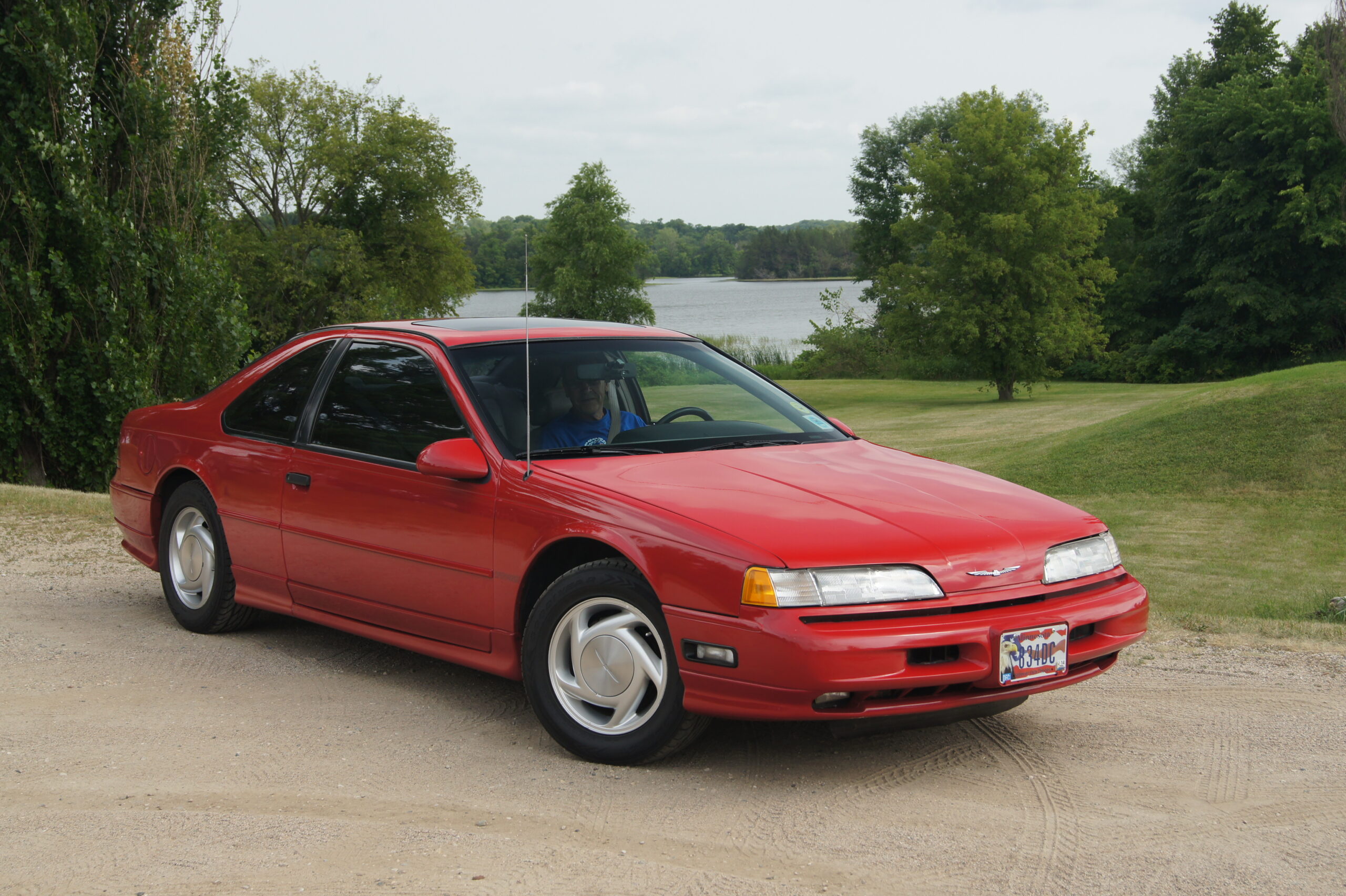
8. **Ford Thunderbird**Ah, the Ford Thunderbird, or as it’s affectionately known, the T-Bird! Even for those who aren’t steeped in automotive history, this name conjures images of classic American cool and effortless style. While its story began earlier, the 1960s saw the T-Bird truly take flight with its third generation, debuting a unique, bullet-like shape adorned with sleek, sharp lines that simply screamed sophistication.
This wasn’t just another car; it was a pioneer, defining what would become known as the “personal luxury car” segment. The Thunderbird’s design unmistakably declared its American heritage, an upscale vehicle that, in true 60s fashion, grew larger in size throughout the decade, embracing the era’s grand aesthetic. It perfectly blended comfort, style, and a hint of performance, making it a highly desirable machine for those who sought refinement without sacrificing an ounce of presence.
Its popularity was undeniable. The initial success of the third-generation T-Bird was astonishing, with sales soaring to over 70,000 units in its first year alone. Later in the 1960s, it underwent another redesign, cleverly reintroducing some of the boxy lines that had originally cemented its fame. The T-Bird’s enduring recognition, even decades later, is a testament to its indelible mark on the American automotive landscape and its role as a timeless icon of luxury and design.
Car Model Information: 2003 Ford Thunderbird
Name: Ford Thunderbird
Caption: 1957 Thunderbird
Manufacturer: Ford Motor Company
Production: unbulleted list
ModelYears: unbulleted list
Class: unbulleted list
Layout: Front-engine, rear-wheel drive layout
Categories: 1960s cars, 1970s cars, 1980s cars, 1990s cars, 2000s cars
Summary: The Ford Thunderbird is a personal luxury car manufactured and marketed by Ford Motor Company for model years 1955 to 2005, with a hiatus from 1998 to 2001.
Ultimately gaining a broadly used colloquial nickname, the T-Bird, the model was introduced as a two-seat convertible, subsequently offered variously in a host of body styles including as a four-seat hardtop coupe, four-seat convertible, five-seat convertible and hardtop, four-door pillared hardtop sedan, six-passenger hardtop coupe, and five-passenger pillared coupe, before returning in its final generation, again as a two-seat convertible.
At its inception, Ford targeted the two-seat Thunderbird as an upscale model. The 1958 model year design introduced a rear seat and arguably marked the expansion of a market segment that came to be known as personal luxury cars, positioned to emphasize comfort and convenience over handling and high-speed performance.
Get more information about: Ford Thunderbird
Buying a high-performing used car >>>
Brand: Ford Model: Thunderbird
Price: $14,500 Mileage: 49,430 mi.
Read more about: John Travolta’s $10 Million Aviation Oasis: Unveiling the Celebrity Dream Home with a Private Airport He Built with His Late Wife
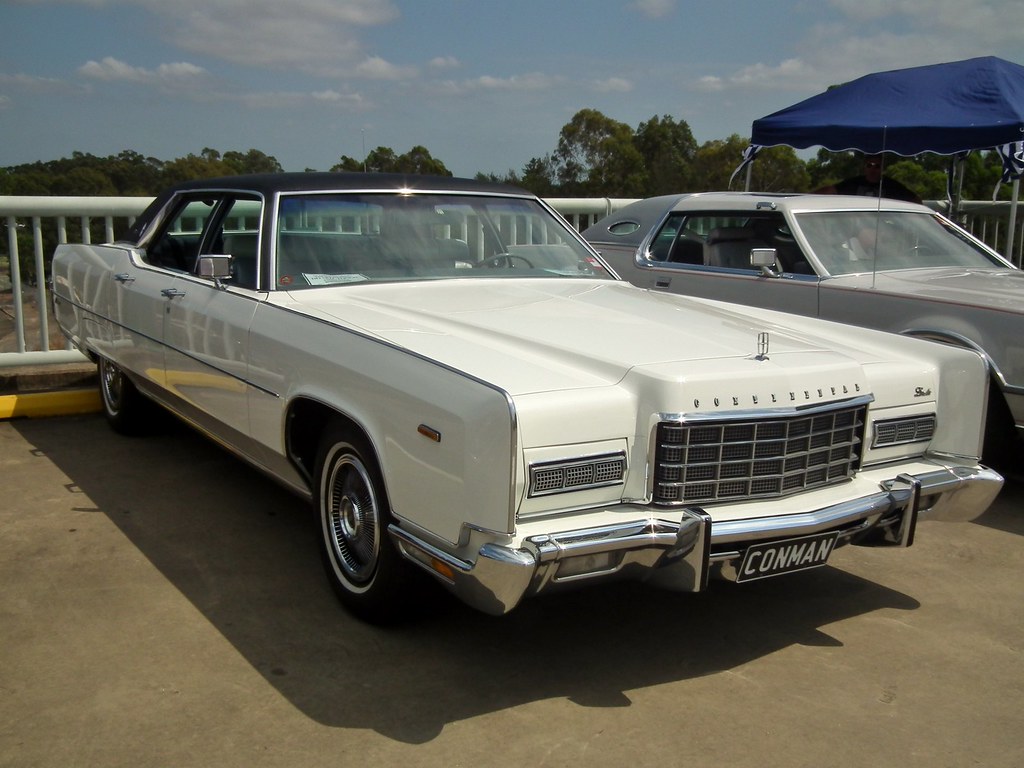
9. **Lincoln Continental**When you talk about American luxury with an undeniable edge, the Lincoln Continental from the 1960s stands as a monumental achievement. It truly took several generations to perfect, but by the time the fourth generation arrived in 1961, lasting nearly a decade through to 1969, Lincoln had truly consolidated its vision, merging all its lines into one magnificent Continental.
This wasn’t just about singular luxury; it was about options that spoke of ultimate refinement. Initially offered as a stately sedan, the Continental soon expanded its appeal with a mid-cycle refresh, bringing forth a sophisticated coupe and, for those who truly appreciated open-air elegance, a four-door convertible. The design was characterized by clean, slab-sided styling, an aesthetic that epitomized 1960s American luxury and undeniably influenced subsequent design languages.
But it was the Continental’s unique, often daring features that truly set it apart. From 1964 to 1965, it boasted a vertical steering wheel adjustment – a truly unusual feature for its time – and, most famously, its rear doors opened backward, earning them the evocative moniker “suicide doors.” These distinctive touches, combined with its spacious interior, smooth ride, and reputation for transporting dignitaries and celebrities, cemented the Lincoln Continental’s place as an enduring symbol of opulence, prestige, and daring innovation.
Car Model Information: 2018 Lincoln Continental Reserve
Name: Lincoln Continental
Caption: 2019 Lincoln Continental
Manufacturer: Lincoln Motor Company
Production: 1939–1942,1946–1948,1956–2002,2016–2020
ModelYears: 1940–1942,1946–1948,1958–1980,1982–2002,2017–2020
Class: Full-size car,luxury car
Layout: Longitudinal engine,Front-engine, rear-wheel-drive layout
Categories: 1930s cars, 1940s cars, 1950s cars, 1960s cars, 1970s cars
Summary: The Lincoln Continental is a series of mid-sized and full-sized luxury cars produced between 1939 and 2020 by Lincoln, a division of the American automaker Ford. The model line was introduced following the construction of a personal vehicle for Edsel Ford, who commissioned a coachbuilt 1939 Lincoln-Zephyr convertible, developed as a vacation vehicle to attract potential Lincoln buyers. In what would give the model line its name, the exterior was designed with European “continental” styling elements, including a rear-mounted spare tire.
In production for over 55 years across nine different decades, Lincoln has produced ten generations of the Continental. Within the Lincoln model line, the Continental has served several roles ranging from its flagship to its base-trim sedan. From 1961 to 1976, Lincoln sold the Continental as its exclusive model line. The model line has also gone on hiatus three times. From 1949 to 1955, the nameplate was briefly retired. In 1981, the Continental was renamed the Lincoln Town Car to accommodate the 1982 seventh-generation Continental. After 2002, the Continental was retired, largely replaced by the Lincoln MKS in 2009; in 2017, the tenth-generation Continental replaced the MKS.
As part of its entry into full-scale production, the first-generation Continental was the progenitor of an entirely new automotive segment, the personal luxury car. Following World War II, the segment evolved into coupes and convertibles larger than sports cars and grand touring cars with an emphasis on features, styling, and comfort over performance and handling. From 1956 to 1957, the Continental nameplate was the namesake of the short-lived Continental Division, marketing the 1956–1957 Continental Mark II as the worldwide flagship of Ford Motor Company; as a second successor, Ford introduced the Continental Mark series in 1969, produced over six generations to 1998.
Along with the creation of the personal luxury car segment, the Lincoln Continental marked the zenith of several designs in American automotive history. The Continental is the final American vehicle line with a factory-produced V12 engine (1948), the final four-door convertible (1967), and the final model line to undergo downsizing (for the 1980 model year).
American production of the Continental and MKZ, its only two sedans, ended in 2020 thereby making Lincoln a crossover/SUV-only brand in the US.
Get more information about: Lincoln Continental
Buying a high-performing used car >>>
Brand: Lincoln Model: Continental
Price: $22,523 Mileage: 86,549 mi.
Read more about: Boomers, Get Ready to Rev! These 12 Iconic ’60s Car Models Still Drive Our Dreams
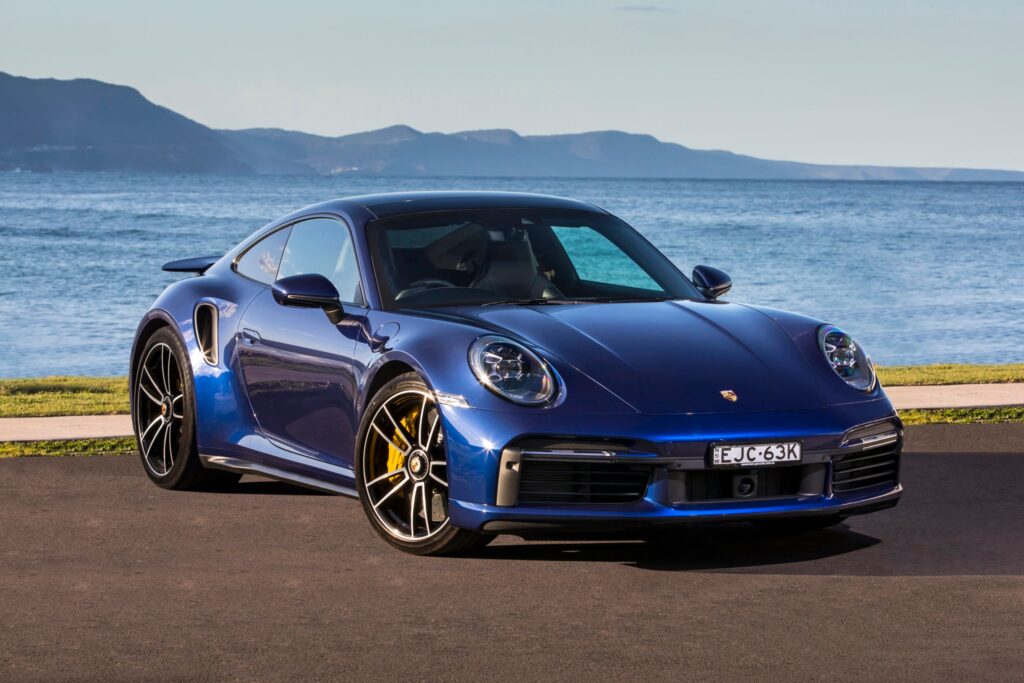
10. **Porsche 911**From the bustling streets of Germany, a legend was born that would redefine sports cars forever: the Porsche 911. Unveiled at the 1963 Frankfurt Motor Show, initially as the 901, it swiftly became an icon, a car that perfectly blended exhilarating performance with unparalleled handling and a timeless aesthetic. It wasn’t just a car; it was a statement of precision engineering and driving purity.
What truly set the 911 apart from its contemporaries was its groundbreaking rear-engine sports car design, combined with one of the era’s first air-cooled flat-six engines. This innovative powertrain didn’t just grab attention; it launched Porsche’s now-famous boxer configuration, a design cherished by enthusiasts worldwide for its distinctive sound and balanced performance. The car’s impressive handling made it a joy on any road, connecting driver and machine in a way few others could.
The 911’s silhouette is, quite simply, legendary. Its curves and lines are instantly recognizable, a testament to its enduring beauty and thoughtful design. This engineering excellence, coupled with its timeless charm, laid the groundwork for six decades of continuous evolution, establishing the 911 as a favorite among driving enthusiasts and a beloved symbol of German automotive artistry. It’s a machine that demands respect and delivers pure, unadulterated driving pleasure.
Car Model Information: 2024 Porsche 911 Turbo
Name: Porsche 911
Caption: The 1 millionth 911 produced on display at Volkswagen Group Forum, Berlin
Designer: Ferdinand Alexander Porsche
Manufacturer: Porsche
Production: September 1964 – present
Assembly: Stuttgart,Baden-Württemberg
Class: Sports car
BodyStyle: unbulleted list
Related: unbulleted list
Layout: Rear-engine design,rear-wheel drive
Predecessor: Porsche 356
Categories: 1970s cars, 1980s cars, 1990s cars, 2+2 coupés, 2000s cars
Summary: The Porsche 911 model series (pronounced Nine Eleven or in German: Neunelf) is a family of German two-door, high performance rear-engine sports cars, introduced in September 1964 by Porsche AG of Stuttgart, Germany. Now in its eighth generation, all 911s have a rear-mounted flat-six engine, and usually 2+2 seating, except for special 2-seater variants. Originally, 911s had air-cooled engines, and torsion bar suspension, but the 911 has been continuously enhanced, and evolved across generations. Though the 911 core concept has remained largely unchanged, water-cooled engines were introduced with the 996 series in 1998, and front and rear suspension have been replaced by Porsche-specific MacPherson suspension up front, and independent multi-link rear suspension.
The 911 has been raced extensively by private and factory teams, in a variety of classes. It is among the most successful competition cars. In the mid-1970s, the naturally aspirated 911 Carrera RSR won world championship races including Targa Florio and the 24 Hours of Daytona. The 911-derived 935 turbo also won the 24 Hours of Le Mans in 1979. Porsche won the World Championship for Makes in 1976, 1977, 1978, and 1979 with 911-derived models.
In a 1999 poll to determine the Car of the Century, the 911 ranked fifth — one of two in the top five that had remained continuously in production (the original Beetle remained in production until 2003). The one millionth example was manufactured in May 2017 and is in the company’s permanent collection.
Get more information about: Porsche 911
Buying a high-performing used car >>>
Brand: Porsche Model: 911
Price: $274,975 Mileage: 1,524 mi.
Read more about: Remember These? 14 Forgotten Cars That Were Cooler Than You Think and Deserve a Second Look!
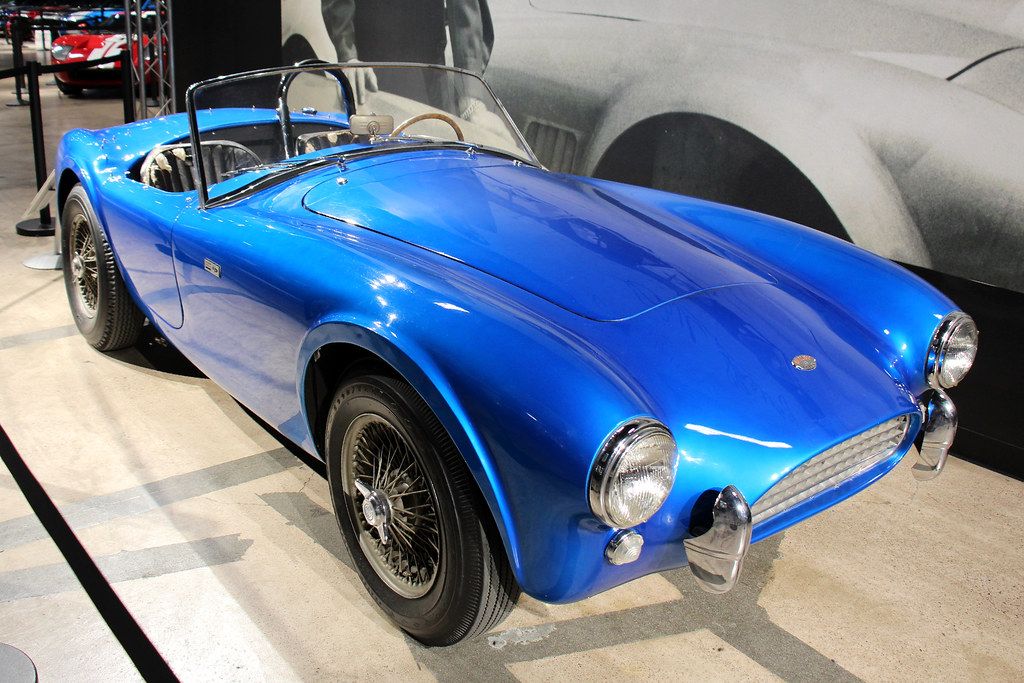
11. **Shelby Cobra**Prepare yourself for pure, unadulterated automotive thunder: the Shelby Cobra. This wasn’t merely a car; it was a fire-breathing beast, an illustrious and frankly brutal combination born from a stroke of genius. Carroll Shelby took a lightweight British AC Ace body and, with audacious ambition, shoehorned in a roaring, powerful Ford-sourced V8 engine, unleashing a performance monster unlike anything else on the road at the time.
Produced between 1962 and 1967, the result was one of the most outstanding and outrageously fast cars ever conceived. The Cobra wasn’t just built for speed; it was engineered for dominance. It received numerous upgrades throughout its production, reaching its peak with the legendary 427 engine. This 7.0-liter Ford powerhouse churned out a staggering 485 horsepower, catapulting the Cobra to a top speed of 185 mph and rocketing from 0 to 60 mph in a mere 4.5 seconds. Talk about jaw-dropping performance!
The Shelby Cobra became a legend on the track and an undeniable symbol of American ingenuity and performance bravado. Its combination of agility, raw power, and distinctive styling has made it one of the most replicated designs in automotive history, a testament to its enduring appeal. Even today, the spirit of the Cobra lives on, with Shelby America releasing a limited edition of the original 427 Cobra for its 50th anniversary, proving that some legends never fade.
Read more about: John Wick’s 1969 Mustang: How a Classic Car Became a Cinematic Icon
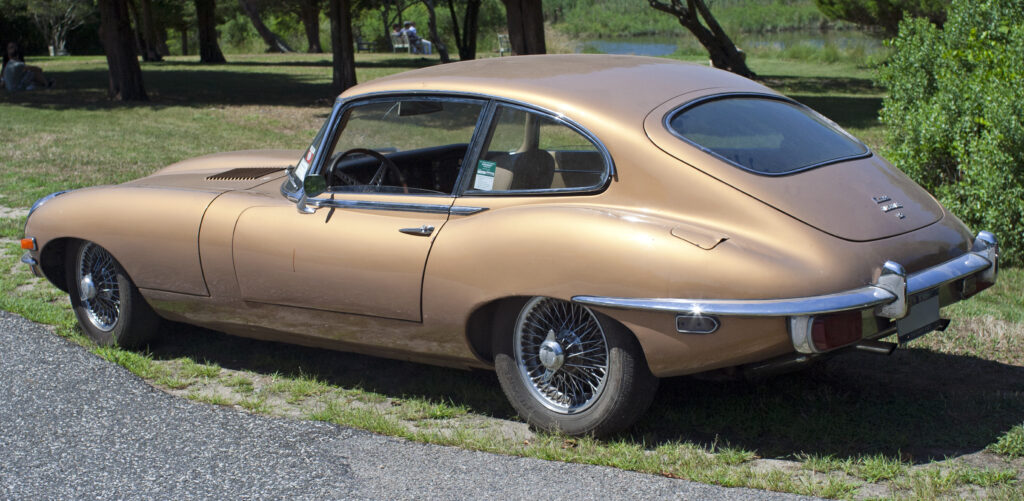
12. **Jaguar E-Type**When Enzo Ferrari himself, one of the world’s most revered sports car manufacturers, declares a car the most beautiful he has ever seen, you know you’re dealing with something extraordinary. The Jaguar E-Type, revealed in 1961, possessed a grace and seductive elegance that few other vehicles have ever come close to reproducing. Its utterly breathtaking beauty was, in fact, a glorious byproduct of its aerodynamically perfect shape, meticulously crafted by Jaguar’s aerodynamicist Malcolm Sayer.
But the E-Type was far more than just a pretty face; it was a powerhouse of performance. Built on a race-oriented platform that was genuinely ahead of its time, it proved to the automotive industry that it was possible to bring such a high-performance, exquisitely designed car to the masses. Its combination of speed, handling, and sculptural form garnered immense attention, captivating automotive connoisseurs and everyday enthusiasts alike.
Perhaps most astonishingly, this exotic marvel was also incredibly affordable, costing only a fraction of other high-end sports cars of the era. This accessibility, coupled with its race-bred capabilities and drop-dead gorgeous lines, made the Jaguar E-Type an instant and enduring classic. It wasn’t just a car; it was a dream brought to life, a testament to British engineering and design at its absolute zenith, cherished for its timeless appeal and thrilling driving experience.
Car Model Information: 1971 Jaguar E-Type Restomod
Sp: uk
Name: Jaguar E-Type
Caption: 1961 E-Type Series 1 3.8-Litre, the first production model of this open two-seater
Aka: Jaguar XK-E , Jaguar V-12
Manufacturer: Jaguar Cars
Production: 1961–1974
Class: Sports car
Predecessor: Jaguar XK150
Related: Jaguar D-Type,Jaguar XJ13
Successor: Jaguar XJS
Layout: FMR layout
Assembly: Coventry,England
Designer: Malcolm Sayer
Categories: 1970s cars, 2+2 coupés, All articles with dead external links, All articles with specifically marked weasel-worded phrases, All articles with unsourced statements
Summary: The Jaguar E-Type, or the Jaguar XK-E for the North American market, is a British front mid-engined sports car that was manufactured by Jaguar Cars Ltd from 1961 to 1974. Its sleek appearance, advanced technologies, high performance, and competitive pricing established it as an icon. The E-Type’s claimed 150 miles per hour (240 km/h) top speed, sub-7-second 0 to 60 mph (97 km/h) acceleration, largely unitary body construction, front and rear independent suspension with disc brakes, mounted inboard at the rear, and rack-and-pinion steering spurred industry-wide changes.
The E-Type was based on Jaguar’s D-Type racing car, which had won the 24 Hours of Le Mans for three consecutive years beginning in 1955.
The E-Type employed what was, for the early 1960s, a novel design principle, with a front subframe carrying the engine, front suspension and front bodywork bolted directly to the body tub. No ladder frame chassis, as was common at the time, was needed and as such the first cars weighed only 1,315 kg (2,899 lb).
It is rumored that, on its debut on 15 March 1961, Enzo Ferrari called it “the most beautiful car ever made”, but this statement is not fully confirmed. In 2004, Sports Car International magazine placed the E-Type at number one on their list of Top Sports Cars of the 1960s. In March 2008, the Jaguar E-Type ranked first in The Daily Telegraph’s online list of the world’s “100 most beautiful cars” of all time.
Get more information about: Jaguar E-Type
Buying a high-performing used car >>>
Brand: Jaguar Model: E-Type
Price: $64,900 Mileage: 2,455 mi.
Read more about: Boomers, Get Ready to Rev! These 12 Iconic ’60s Car Models Still Drive Our Dreams
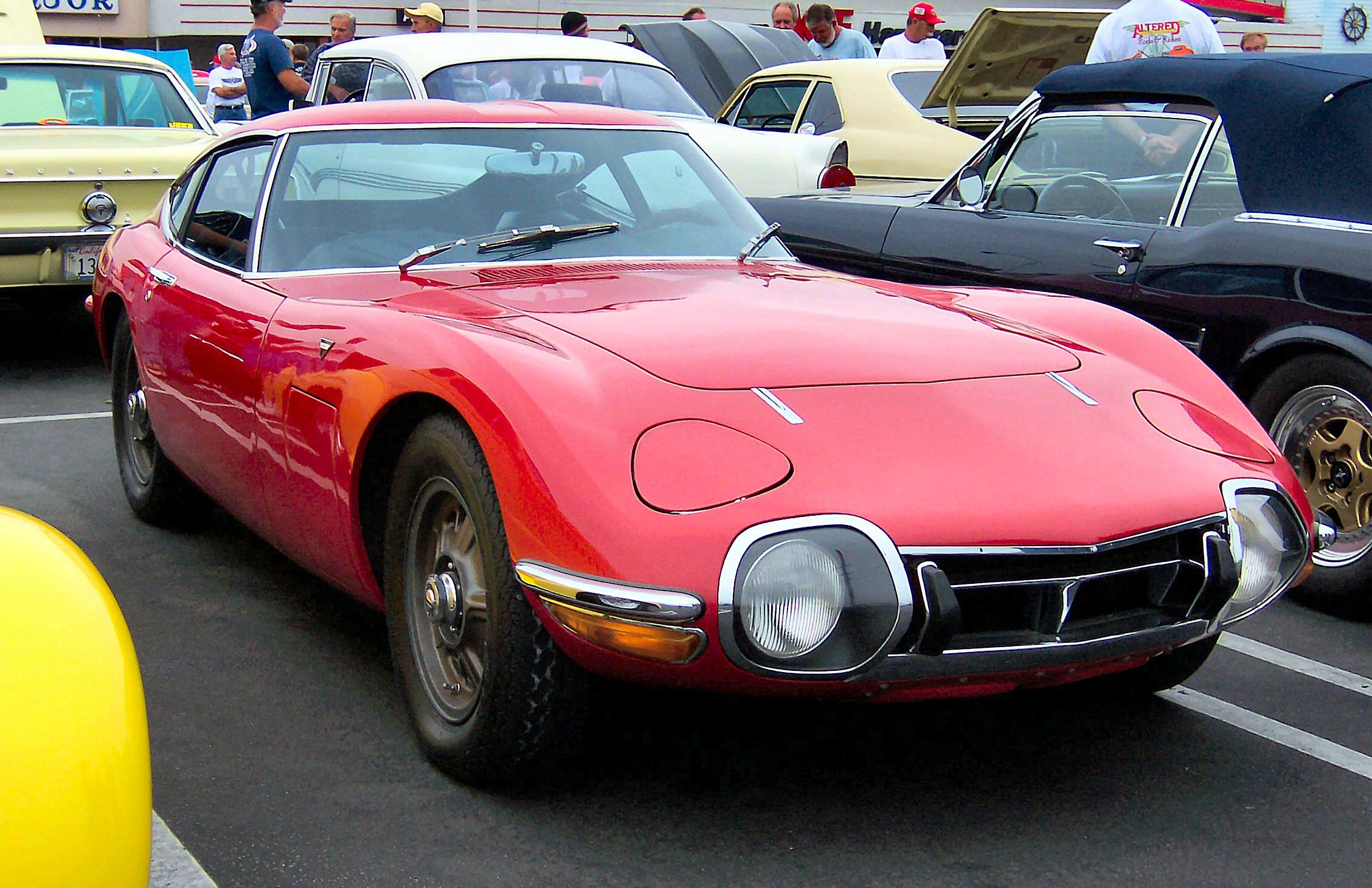
13. **Toyota 2000GT**Suddenly, from the Land of the Rising Sun, a sleek and stunning coupe emerged that would forever alter the global sports car landscape: the Toyota 2000GT. Initially unveiled as a show car in 1965, its immense success demanded mass production, which began in 1967. This wasn’t just a Japanese car; it was a statement of intent, meticulously crafted to compete on the world stage.
Underneath its breathtaking, sensuous silhouette – which, incidentally, was inspired by the legendary Jaguar E-Type – lay a truly refined machine. Powered by a Yamaha-tuned 2.0-liter inline-six engine, delivering 150 horsepower, the 2000GT was perfectly poised to rival the best European sports cars of its period. Its front mid-engine, rear-wheel-drive layout underscored a deep commitment to driving dynamics, showcasing the Japanese manufacturer’s incredible attention to detail.
The Toyota 2000GT was an instant hit, quickly becoming the first Japanese car prized by collectors worldwide. Its success in international racing further cemented its formidable reputation, elevating it to a symbol of Japanese automotive innovation and engineering excellence. With its limited production and distinctive styling, the 2000GT remains a cherished classic, celebrated for its beauty, performance, and its pivotal role in introducing Japanese sports car prowess to a global audience.
Read more about: The Ultimate Nineties Rewind: 15 Coolest Cars of the Decade That Still Fuel Our Automotive Dreams
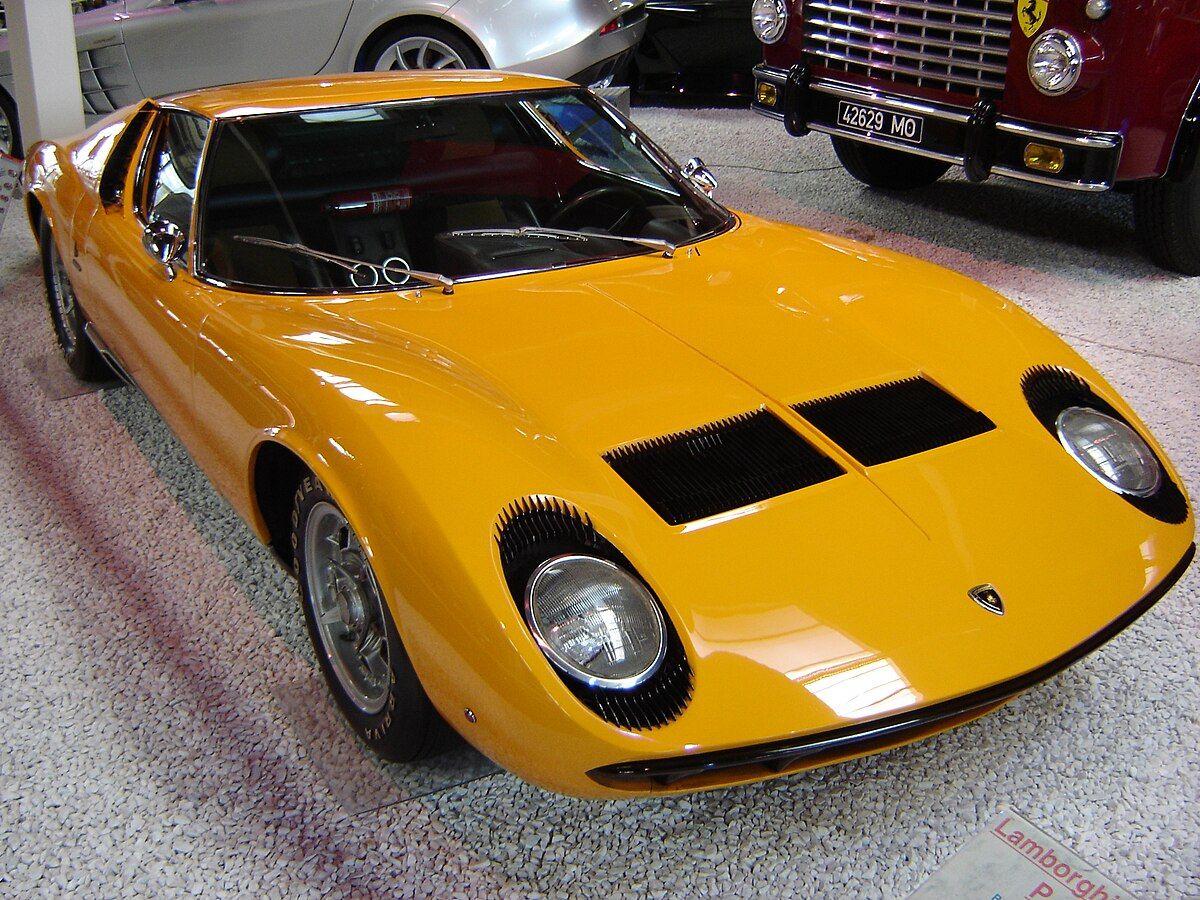
14. **Lamborghini Miura**And now, for a car that doesn’t just drive, it *sings*! The Lamborghini Miura. When you speak of automotive beauty, the Miura stands shoulder-to-shoulder with titans like the Ferrari 250 GTO and the Jaguar E-Type. It is, without a doubt, one of the most beautiful creations the automobile world has ever witnessed, leaving behind a rich, intoxicating heritage that continues to be cherished by countless enthusiasts worldwide.
Unveiled in 1966, the Miura didn’t just arrive; it exploded onto the scene, immediately rocketing to fame for both its utterly incredible beauty and its absolutely jaw-dropping performance. This wasn’t a car; it was a revolution, the undisputed progenitor of the supercars we admire today. Its sleek, low-slung body, with its iconic headlight ‘eyelashes’, was nothing short of a moving work of art.
At its heart throbbed a magnificent 3.9-liter V12 engine, mounted transversely mid-ship – a radical layout for its time – endowing the Miura with blistering speed. It was, quite simply, one of the fastest production cars on the planet, a testament to Lamborghini’s audacious vision and engineering prowess. The Miura’s legacy is a shimmering beacon of passion, power, and unparalleled style, a car that continues to inspire awe and capture hearts, proving that true automotive artistry is eternal.
Read more about: Unpacking the Giant: 12 Brands You Might Not Realize Are Part of the Volkswagen Group
As we rev down from this high-octane journey through the truly unforgettable automobiles of the 1960s, it’s clear that this decade wasn’t just a period of evolution; it was a full-throttle revolution. From the roaring American muscle machines to the sleek, sophisticated European grand tourers and the groundbreaking Japanese sports cars, these vehicles weren’t merely modes of transport; they were statements, dreams, and cultural icons. Each car, in its own magnificent way, contributed to a golden era of design, engineering, and pure, unadulterated driving passion. They are the legends that shaped our love for cars, continuing to inspire, thrill, and remind us of a time when every drive was an adventure, and every car had a soul that roared.


